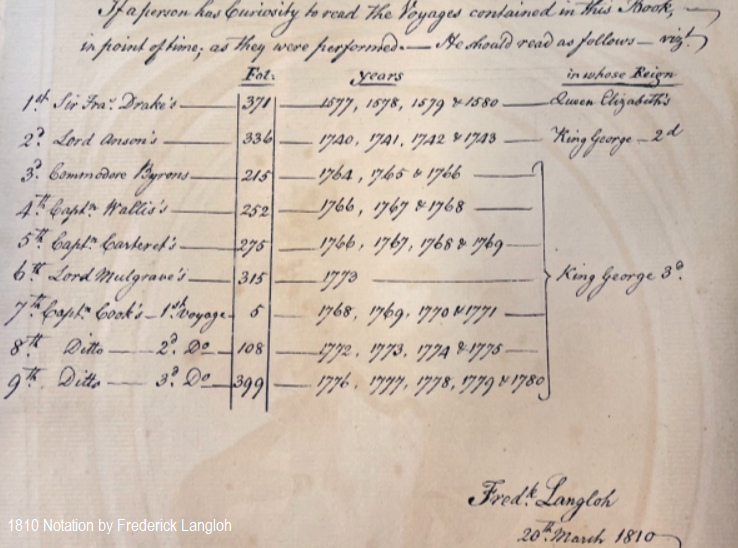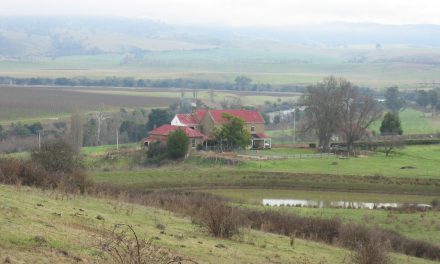Recent research from an unexpected source has shed a surprising light on our esteemed family associate, Frederick Langloh, which will be of considerable interest to our Research Group.

Catherine Elizabeth (Langloh Parker) Stow
Earlier posts about Frederick on our site included interesting information we had discovered about one whom our posts referred to as Catherine Langloh Parker (her name when married to Langloh Parker who was a great-nephew of our Frederick Langloh’s wife, Mary nee Parker) who following Langloh Parker’s premature death remarried to Percival Randolf Stow, a pastoralist member of the well to do Stow family of Adelaide. Catherine’s original family name was Catherine Eliza Somerville Field – the Fields also a well to do Adelaide family.
Whilst residing at the Parker’s Bangate Station (near Walgett, NSW) Catherine made an intense study of the aboriginal culture of that area (the Noongahburrah and Euahlayi people) and over some 20 years became a respected authority, effectively an amateur but learned anthropologist, who wrote and published extensively on the topic, describing the dreamtime stories and cultural mores in great detail. Even today her writings are frequently referenced within Australian and international universities in studies of Australian indigenous culture. She wrote under the pen name K. Langloh Parker.
A few months ago Mr George Becker (and his Associates Andrzej Czechowicz, and James Loftus ) of St Peter’s College, Adelaide, who were engaged in a programme of researching and documenting the origin and content of a collection of rare texts held within St Peter’s Miller Library, came to be appraising a book published in 1784** on the three voyages of Captain James Cook, which book also included descriptions of voyages by other noted English maritime explorers (eg, Sir Francis Drake) covering the period 1577 to 1780. [**Officially titled, ‘A new, authentic, and complete collection of voyages round the world, undertaken and performed by royal authority’].
Of great interest to our Family this particular book was hand signed by Frederick Langloh on a page on which he had also recorded a chronology of the various explorers treated in the book. Our Header image shows Frederick’s notation which he entered on March 20th, 1810; it was apparent that he had owned the book at that time. Frederick was then aged 28, lived in London, and had been recently married to Mary Parker. Frederick’s book found its way to Catherine via her first marriage to Langloh Parker, son of Mary Parker’s brother James. James and his wife were also passengers with Frederick & Mary, and our William Hartley & Margaret Wilson on the Skelton’s 1820 voyage from Edinburgh (Leith).
Mr Becker’s task was to undertake research to establish the provenance of the book and of people associated with it, and this led to his searching for information on Frederick Langloh. In a general internet search process he came across our family website and its reference to Frederick, and he made contact via the email address on the site. Our site administrator was able to direct Mr Becker’s attention to the several site posts about the Langloh family as well as the various links and attachments our site contained.
St Peter’s Miller Library contains many rare books which have been donated over the College’s history by people who have had associations with the college. This so called ‘Cook Book’ was donated by Catherine Langloh Parker Stow in 1938. Earlier members of the Stow family had been amongst founders of St Peter’s College, and various of their descendants had been educated there.
Information which Mr Becker had on the book, its donor and the Stow family when joined with information on this website about the Langloh and Parker families and Kate Langloh Parker clarified the linkages and permitted Mr Becker and his Associates to complete their task, leading to publication of their provenance document – ‘Miller Library Rare Books Collection; Captain Cook’s Voyages around the World; Written by Andrzej Czechowicz, James Loftus and George Becker’
Mr Becker and Associates have given permission for us to provide access for our Wilson Family Research Group members on this site on a strictly restricted basis via this password protected page. Access may be made via this Google Drive link – it is in large pdf file format of size approximately 260Gb.
https://drive.google.com/file/d/1ZHs8HPFcdsn4m8Y7N9VkAaOi_j5C1Pe1/view?usp=sharing
Copyright: Kindly note the initial Copyright provision as detailed below**. However as of February 7, 2022 it is fully available for our individual research and for public viewing.
Attention is also drawn to one of the reference documents by Ms Jane Singleton – ‘What Katie did’ – this also is a very interesting outline of Kate Langloh Parker’s work on indigenous culture of the Walgett region, and it permits open access to this study by Ms Singleton.
We express our appreciation to Mr Becker and his Associates, Messrs.Czechowicz and Loftus for granting this permission.
Interpreting Frederick’s Interest in Maritime Explorations: As with William & Margaret we have also mused as to why Frederick and Mary would have wished to undertake such a risky voyage to take up residence in a convict settlement under military control on the other side of the world. All the evidence we have indicates he was a successful lawyer within the elite ranks of London’s Gray’s Inn Establishment Set of the legal fraternity, as was his father. Our evidence also indicates he was well cashed up such as to warrant a 2200 acres land grant on arrival.
Might we infer from his ownership of the ‘Cook Book’ of maritime exploration and his keen noting of the chronology summary that he had become an avid student of the exploits of these great explorers, indeed to the point where his mindset became dominated by a desire to experience for himself the delights and mysteries of the south seas domain. He had the means, and perhaps after the early death of his first wife, and then together with his young new wife he felt it timely to seek fresh horizons starting with the antipodes.
But, a harsh penal colony – did they really have any idea of what lay ahead there. Ample land opportunity he probably was aware of, but as a person of means moving from an elite and sophisticated society to a very raw colony of military and convicts?.
Family legend informs us that William’s spouse Margaret, cried and cried for days after their arrival as she realised the nature of their new domain. We wonder did Mary react similarly. We can but speculate.
**Copyright ©2021 St Peter’s College. All rights reserved.
Published by Miller Library, St Peter’s College; First published in 2021
Hackney Road, Hackney, Adelaide, S.A. — www.stpeters.sa.edu.a





